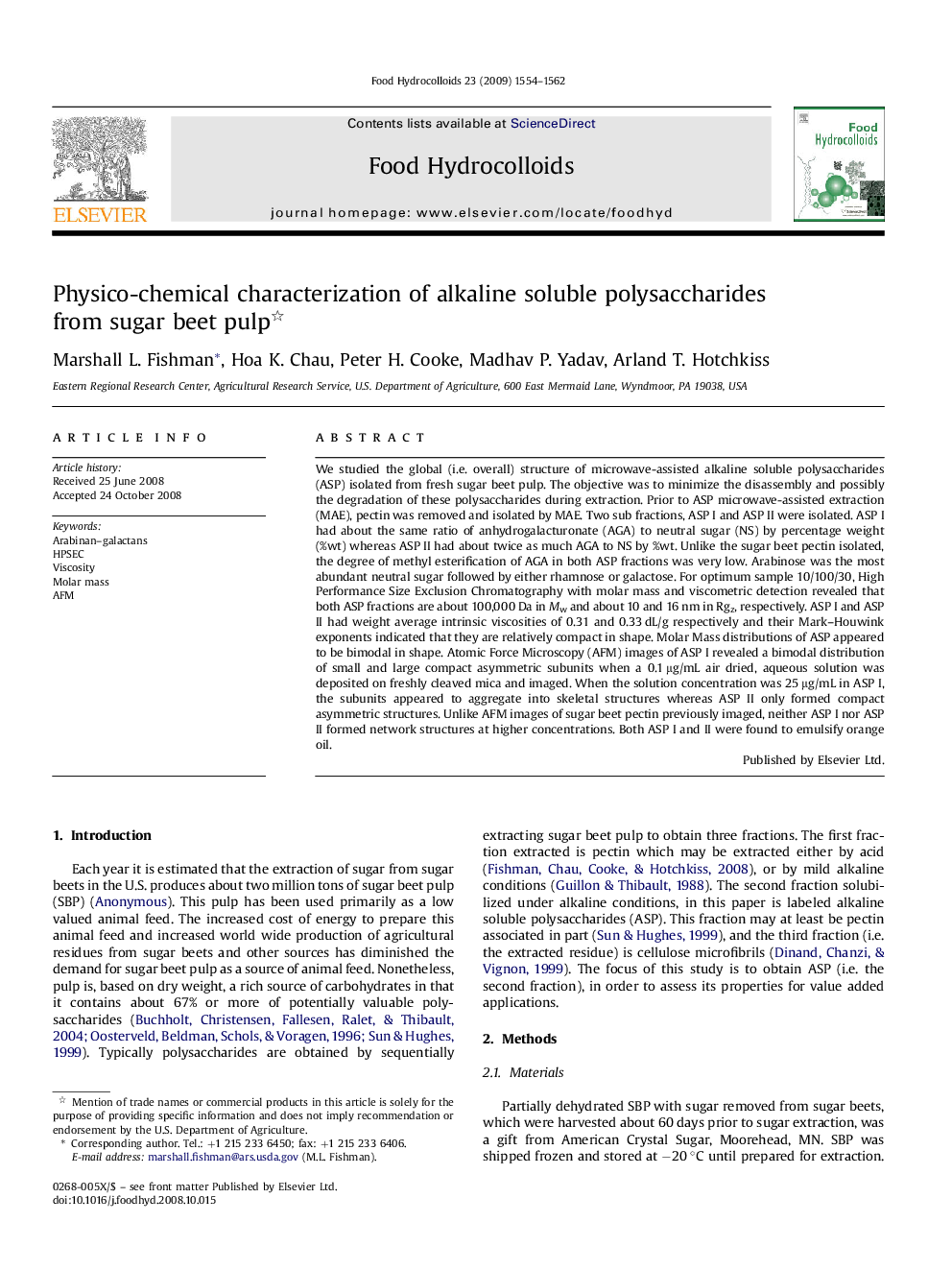| Article ID | Journal | Published Year | Pages | File Type |
|---|---|---|---|---|
| 604823 | Food Hydrocolloids | 2009 | 9 Pages |
We studied the global (i.e. overall) structure of microwave-assisted alkaline soluble polysaccharides (ASP) isolated from fresh sugar beet pulp. The objective was to minimize the disassembly and possibly the degradation of these polysaccharides during extraction. Prior to ASP microwave-assisted extraction (MAE), pectin was removed and isolated by MAE. Two sub fractions, ASP I and ASP II were isolated. ASP I had about the same ratio of anhydrogalacturonate (AGA) to neutral sugar (NS) by percentage weight (%wt) whereas ASP II had about twice as much AGA to NS by %wt. Unlike the sugar beet pectin isolated, the degree of methyl esterification of AGA in both ASP fractions was very low. Arabinose was the most abundant neutral sugar followed by either rhamnose or galactose. For optimum sample 10/100/30, High Performance Size Exclusion Chromatography with molar mass and viscometric detection revealed that both ASP fractions are about 100,000 Da in Mw and about 10 and 16 nm in Rgz, respectively. ASP I and ASP II had weight average intrinsic viscosities of 0.31 and 0.33 dL/g respectively and their Mark–Houwink exponents indicated that they are relatively compact in shape. Molar Mass distributions of ASP appeared to be bimodal in shape. Atomic Force Microscopy (AFM) images of ASP I revealed a bimodal distribution of small and large compact asymmetric subunits when a 0.1 μg/mL air dried, aqueous solution was deposited on freshly cleaved mica and imaged. When the solution concentration was 25 μg/mL in ASP I, the subunits appeared to aggregate into skeletal structures whereas ASP II only formed compact asymmetric structures. Unlike AFM images of sugar beet pectin previously imaged, neither ASP I nor ASP II formed network structures at higher concentrations. Both ASP I and II were found to emulsify orange oil.
